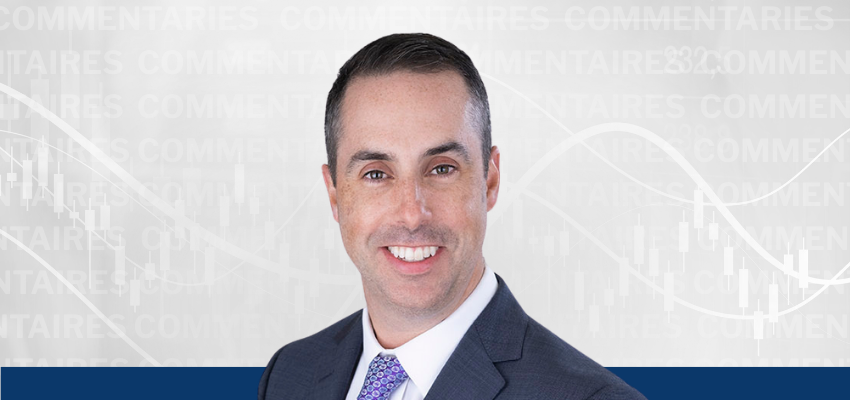Highlights
- There was a pickup in deal activity in December as pent-up demand going into the US election was released. We initiated positions in 16 new merger deals during the month, notably in several small-cap deals trading at high yields.
- Six deals held within the Fund closed during the period.
- With SPAC yields falling as mature SPACs liquidate, we will prioritize deploying capital into merger arbitrage deals.
Dear Unitholders,
The Pender Alternative Arbitrage Fund and the Pender Alternative Arbitrage Plus Fund were down -0.1% and -0.1%[1] respectively in December 2024 while the HFRI ED: Merger Arbitrage Index (USD) returned 0.4%[2]. For the full year the Arbitrage Fund returned 3.7% while the Arbitrage Plus Fund returned 4.2% and the HFRI ED: Merger Arbitrage Index (USD) was up 5.9% during the same period.
M&A Market Update
Global M&A activity totaled nearly $3.4 trillion in 2024 rising 8% from last year’s decade-low levels.[3] Notably the average deal size increased with a lower deal count in 2024. The resurgence in large transactions should drive momentum into 2025 with an increase in activity post the US election. The deal making environment was already improving going into the election with declining interest rates and strong equity markets providing dealmakers with the confidence and capital to pursue deals. With the Trump administration election sweep and proposed pro-business agenda, we believe M&A is expected to surge. A regulatory reset with Trump appointees set to take over the FTC and DOJ, indications that corporate taxes could be cut, and the potential for more pro-growth policies should create a favorable environment for M&A activity. With major market themes including artificial intelligence, electrification and reshoring supply chains as well as a focus for companies seeking to acquire capabilities and human capital, the setup for M&A in 2025 is encouraging.
A clear indication that dealmakers believe there has been a shift in the regulatory environment for mergers is the notable increase in horizontal mergers post-election. A horizontal merger is when two competitors or companies with a similar business or operating in a similar industry combine with the goal of improving efficiency through scale and market power. These mergers were scrutinized closely by regulators and were challenged aggressively under the Biden administration as they could reduce competition within an industry, resulting in companies gaining too much pricing power thereby harming customers and competitors. The proposed $13 billion acquisition of advertising company Interpublic Group of Companies, Inc. by competitor Omnicom Group Inc. which was announced in December is an example of this type of merger which would combine two of the six biggest advertising firms in the world. The announced mergers between consumer packaging leaders Berry Global Group, Inc. and Amcor plc and visual content companies Getty Images Holdings, Inc. and Shutterstock, Inc. are more examples of horizontal mergers announced post-election. It is unlikely these mergers would have gained approval under the Biden administration’s FTC and DOJ so the market will be following these deals closely as regulatory approval under the Trump administration would indicate a dramatic shift in regulatory policy and be a major catalyst for M&A.
SPAC Market Update
In addition to the improved outlook for M&A and merger arbitrage, the new Trump administration is also expected to have a positive impact on the SPAC sector with several SPAC friendly appointments and regulatory changes expected. Howard Lutnick, Chairman and CEO of Cantor Fitzgerald, the leading SPAC underwriter in 2024 and sponsor of several SPACs, was nominated by President Trump to lead the Commerce Department. Gary Gensler, Chair of the SEC, who has been a critical opponent of SPACs and enacted aggressive regulations and policies to restrict SPACs will also be stepping down from his role and replaced by a Trump appointee in January. With a more favorable regulatory backdrop the SPAC sector could see a resurgence in popularity as a viable way for private, early-stage businesses to go public and access capital.
There were seven SPAC IPOs in December raising $1.1 billion with three SPAC deals closing during the month and two SPAC liquidations[4]. A notable uptick in SPAC activity occurred in the second half of 2024 with 57 SPAC deals closed during the year up from the 35 deals that closed in 2023. At the end of the year, there were 199 active SPACs in the market with assets of $14.9 billion, 105 of which are actively searching for targets. SPACs searching for targets were trading at a discount-to-trust value, which provided a yield-to-maturity of 4.74%[5]. As the median SPAC yield has fallen from over 9% at the start of the fourth quarter to under 5% at year-end, the SPAC exposure in the Fund is expected to fall as we prioritize investments in higher returning merger arbitrage investments.
“With a favorable outlook for M&A, wide relative spreads and compelling diversification benefits, 2025 could be the year to add some arb exposure to your portfolio.”
Portfolio Update
As pent-up demand going into the US election was released, there was a pickup in deal activity in December. Dealmakers who were hesitant to announce a deal going into an uncertain election now have better clarity on what the M&A environment could look like under a Trump presidency. We took advantage of this increased deal flow, initiating positions in 16 new merger deals during the month while six deals held within the Fund closed. Notably we initiated positions in several small-cap merger deals which we assessed to be high quality and traded at expected yields around 8%. With a wide set of high-quality opportunities and attractive yields, we are hopeful that this is an early indication of what the merger arbitrage environment could look like under the new administration. With SPAC yields falling as mature SPACs liquidate and new SPAC IPOs offer fewer sweeteners to enhance returns, we will prioritize deploying capital into merger arbitrage deals.
Reviewing Pender’s equity funds, we are also encouraged on the outlook for small cap M&A as our firm’s equity portfolios are primed with what we believe are attractive take-out candidates. Dozens of holdings across Pender’s equity funds have recently received an expression of interest, initiated a strategic review, have an activist investor or have added management compensation incentives in the event of a sale. M&A deals which are current or former Pender equity holdings have historically been among the larger weights in the Fund and the largest contributors to performance. With our equity portfolios primed with potential deal flow and a compelling market environment for small-cap M&A, we are excited about the prospects for the strategy in the months and quarters ahead. At the end of December 2024, the Fund had 37 investments in small cap deals under $2 billion, 30 of which were valued at under $1 billion.
Outlook
Despite a shaky final month of the year with most equity markets down, 2024 was a banner year for equity indexes with the S&P 500 up 25.0%, the NASDAQ advancing 29.6%, the S&P/TSX composite rising 21.7% and the Russell 2000 up 11.5%. The strength in equities has driven euphoric sentiment with frothy valuations in several parts of the market and rising speculation for risk assets. The S&P 500 has now outperformed the Russell 2000 for four consecutive years, further widening the valuation gap between small and large cap companies. With the lack of market breadth, there may be some economic challenges under the surface. It also increases the potential for small cap M&A as larger competitors and financial acquirers seek to take advantage of the attractive valuations amongst smaller companies. With the Trump administration’s new appointments at key antitrust positions and a deregulated, pro-growth and pro-business policy agenda, M&A activity is poised to rise.
While we are encouraged about the outlook for M&A in 2025, the outlook for the market is less certain with equity valuations at historical highs, however the path of short-term and terminal interest rates is uncertain. The Fed remains in a precarious position having to balance the decline in inflation while also accounting for a stronger than expected labour market and the potential impact from the Trump administration’s implementation of tariffs. With the decline in interest rates through 2024, investors have had adverse opportunities to invest with most low-risk, short-duration fixed-income investments offering a yield of less than 4%. Alternative investment strategies like merger arbitrage offer a low-risk, non-correlated and tax-efficient investment opportunity for investors seeking to diversify their portfolios. If inflation stays high or potentially rises due to the policies of the new US administration, there is potential for a similar environment as 2022 to materialize with tighter correlation between stocks and bonds. With a favorable outlook for M&A, wide relative spreads and compelling diversification benefits, 2025 could be the year to add some arb exposure to your portfolio.
Amar Pandya, CFA
January 27, 2025
[1] All Pender performance data points are for Class F of the Fund unless otherwise stated. Other classes are available. Fees and performance may differ in those other classes. Standard Performance Information for the Fund may be found here: https://penderfund.com/solutions/
[2] The Fund’s benchmark is the HFRI ED: Merger Arbitrage Index (Hedged to CAD).
[3] M&A in 2024 and Trends for 2025




